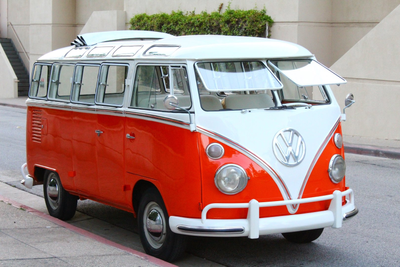The Volkswagen Transporter T1 (Facelift 1963)
Introduction
The Volkswagen Transporter T1, also known as the VW Bus or the Bulli, is an iconic vehicle that has become synonymous with the counterculture movement of the 1960s. The T1 was first introduced in 1950 and quickly gained popularity due to its unique design and versatile capabilities. In 1963, Volkswagen introduced a facelift to the T1, enhancing its aesthetics and performance.
Exterior Design
The facelift of the Volkswagen Transporter T1 in 1963 brought subtle yet noticeable changes to its exterior. The most apparent alteration was the addition of a larger and more robust front grille, which gave the T1 a bolder and more imposing presence on the road. The headlights were also redesigned, featuring a sleeker and more modern look. The combination of these changes refreshed the look of the T1, making it more contemporary while maintaining its classic charm.
Interior Enhancements
Inside the T1, the facelift brought several improvements that enhanced comfort and functionality. The dashboard was redesigned, incorporating a more ergonomic layout and adding features such as a rev counter and a fuel gauge. The seating was also upgraded, providing better support and comfort for passengers. Additionally, the facelift introduced new upholstery options, allowing owners to customize the interior to their preferences.
Enhanced Performance
The 1963 facelift of the Volkswagen Transporter T1 not only focused on aesthetics but also improved its performance. The engine received an upgrade, resulting in better acceleration and a higher top speed. The handling was also refined, thanks to modifications made to the suspension system. These enhancements made the T1 more enjoyable to drive, whether on long road trips or urban commutes.
Safety Features
With the facelift, Volkswagen introduced safety features to ensure the well-being of passengers. One significant improvement was the inclusion of front disc brakes, providing superior stopping power compared to the previous drum brakes. This enhancement significantly improved the T1's overall safety and reduced stopping distances, particularly when fully loaded. The facelift also enhanced the visibility of the T1 by introducing larger rearview mirrors and improved lighting systems.
Cultural Significance
The Volkswagen Transporter T1 is not just a car; it represents an entire generation. Its association with the counterculture movement of the 1960s, particularly the hippie culture, has made it an icon of freedom and adventure. The T1 became a symbol of self-expression, and its spacious interior allowed people to travel and live on the road. Today, the T1 is often seen at classic car shows and vintage festivals, continuing to captivate audiences with its timeless design and cultural significance.
Conclusion
The 1963 facelift of the Volkswagen Transporter T1 brought several enhancements that improved both its appearance and performance. With its larger front grille and redesigned headlights, the T1 gained a more modern and assertive look. The interior upgrades increased comfort and functionality, while the improved engine and suspension enhanced the overall driving experience. Safety features like front disc brakes prioritized passenger well-being, making the T1 a reliable and secure choice. Today, the Volkswagen Transporter T1 remains an iconic vehicle, representing an era of freedom and self-expression.


